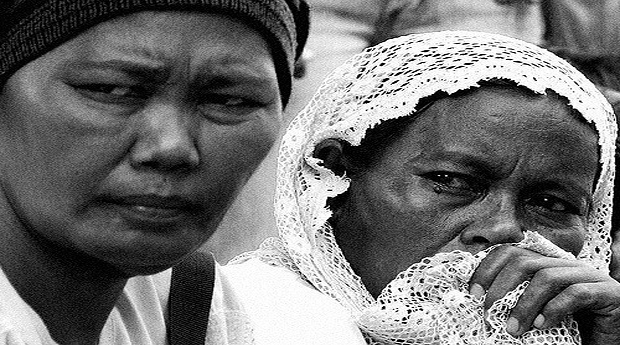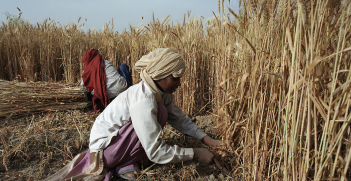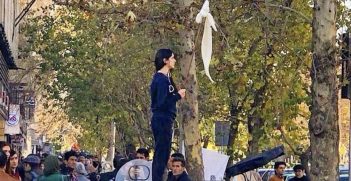Peace, Sex and Violence in Mindanao

Strong women’s participation in the Mindanao peace process in the Philippines has been hailed as an international success story. However, lasting peace requires a greater focus on sexual and reproductive health to overcome the post-conflict marginalisation of vulnerable women and girls.
According to a UN Women study, between 1990 and 2011 across 31 peace processes that the UN was involved in, women represented just 2 per cent of chief mediators, 4 per cent of witnesses and signatories, and 9 per cent of negotiators. In the Mindanao peace process, however, women represented 50 per cent of the government’s negotiating team and 25 per cent of the signatories. The gender inclusive peace process culminated in the signing of the Comprehensive Agreement on the Bangsamoro (CAB) between the Moro Islamic Liberation Front (MILF) and the government of the Philippines on 27 March 2014. Women’s presence on both sides of the negotiating table and throughout the peace negotiation process opened spaces for advancing gender-specific provisions. For example, the CAB and succeeding annexes stipulated allocating 5 per cent of the Bangsamoro official development funds for gender and development programs and targeted socioeconomic assistance for decommissioned MILF women auxiliary forces.
Such significant strides in women’s participation are enabled by the presence of national institutional frameworks including the National Action Plan on Women Peace Security that explicitly recognises the distinct vulnerability of women and girls in conflict situations as well as the importance of gender-inclusive peace processes for sustainable peace. Lasting peace, however, is contingent on bridging sexual and reproductive health gaps across all groups of women in Mindanao (an island in the southern Philippines) especially the indigenous and internally displaced. The Mindanao case demonstrates how the continued neglect of sexual and reproductive health obscures the root causes of sexual and gender-based violence (SGBV) during conflict and also perpetuates the political and economic marginalisation of women and girls post-conflict.
Internally displaced women and girls
Majority of the world’s preventable maternal deaths occur in conflict-affected and fragile states. Looking beyond conflict, sexual and reproductive health gaps reflect broader patterns of state-sanctioned discrimination over whose bodies matter. Mindanao, and particularly the Autonomous Region in Muslim Mindanao (ARMM) region, has registered the highest rates for maternal mortality and fertility, the least access to contraception and the fewest births with skilled attendants in the Philippines. Consequently, the most conflict-afflicted areas in Mindanao, which have the highest recorded number of internally displaced people (IDP), also register the lowest levels of human development nationally. Ethnic and indigenous minorities such as the Moros are also more likely to be internally displaced. In IDP camps, however, women and girls suffer the brunt of protracted conflicts. They face intensified burdens to provide unpaid care and domestic work including community food provision in the face of relief shortages and providing emotional support when they themselves have suffered trauma.
Cultural and religious discourses around female altruism, especially the ideal of the “self-sacrificing mother”, serve to legitimise the survival of families and communities in times of crisis at the expense of sexual and reproductive wellbeing for women and girls. That is, through the gendered division of labour which is intensified in times of conflict, they are expected to put the needs of everyone else before their own. In many cases, women and girls do not feel entitled to care for their own health needs and this is a measure of how good they are as mothers, wives or daughters. Female altruism also enables other forms of SGBV in times of crisis. For instance, the same familial obligation will push women and girls as mothers, wives and daughters to commit self-sacrificing acts such as transactional sex in exchange for relief goods. They are therefore effectively denied their right to security, health and pleasure through prevailing cultural and material conditions in IDP camps where often there are substandard living conditions, poor protection mechanisms and no access to crucial sexual and reproductive health services such as post-exposure prophylaxis and abortion.
Linking sexual violence and rights
In periods of crisis, sexual and reproductive health needs intensify. This intensification, however, remains largely unmatched by state and global expenditure inflows to sustain the health and wellbeing of women and girls upon whom the survival of communities largely depend. And yet, it is also in conflict situations where women and girls are most at risk of SGBV particularly in displacement due to limited reporting and protection mechanisms. Lack of reporting, consequently, affects the availability of sexual and reproductive health services which in turn are guided by prevalence estimates. In IDP camps, for instance, where there may be higher rates of SGBV that go unreported, there is an even greater unmet need for comprehensive services and supplies that are crucial to treating the often brutal consequences of rape and sexual violence. Moreover, community health workers in conflict-affected areas who are typically first responders are usually ill-equipped, under-staffed and themselves misinformed about sexual and reproductive health. Predominantly women, they too face heightened risks for conflict-related SGBV and require sexual and reproductive health support.
Women and girls as reproducers
The deterioration of sexual and reproductive health among Moro women and girls in conflict is mediated by their role as biological and symbolic carriers of clan/ethnic/religious identities within political contestation to define the nation. Throughout the Mindanao peace process, the MILF’s side of the negotiating table remained exclusively male and has never had direct representation of women despite enlisting them as auxiliary forces. That is, though the numbers of women involved in various roles in the peace process gradually increased, this was reflected more on the side of the government panel while participation for broader groups of Moro women were limited to indirect consultations spearheaded by the government. The lack of direct participation among Moro women from the MILF panel is telling of the prevailing patriarchal beliefs held by the rebel group. Crucially, this contributed to the neglect of “within-group” violence and discrimination that disproportionately harms Moro women and girls before, during and after conflict.
Specifically, cultural-religious sanctions on early marriage, polygamy and unequal inheritance rights that are embedded in Sharia and customary laws were not scrutinised in the peace process. Many of these codes regulate the family as a political and social institution thereby restricting women’s autonomy over their own bodies. They proscribe appropriate sexual relations and reproductive practices thus underscoring the significance of women’s role as biological and cultural reproducers for their experiences of violence and insecurity.
Neglecting various forms of violence that largely occur at clan and community levels—instead of viewing them as part of a continuum with intrastate conflict—prevents the peace process from fully addressing the vulnerability of Moro women and girls in conflict and stems the impairment of their human development post-conflict. Promoting sexual and reproductive rights therefore must be at the heart of any peace process. Sustainable peace, wherein broader groups of women and girls fully participate, is also where their bodily autonomy is respected.
Maria Tanyag is a PhD candidate and research assistant at the School of Social Sciences, Monash University. Her doctoral research investigates how crises such as armed conflicts and environmental disasters exacerbate pre-existing gendered inequalities that undermine sexual and reproductive rights using the Philippines as a case study. The article is published under a Creative Commons Licence and may be republished with attribution.
Photo of Moro Women by Keith Bacongco, republished under a Creative Commons License 2.0





